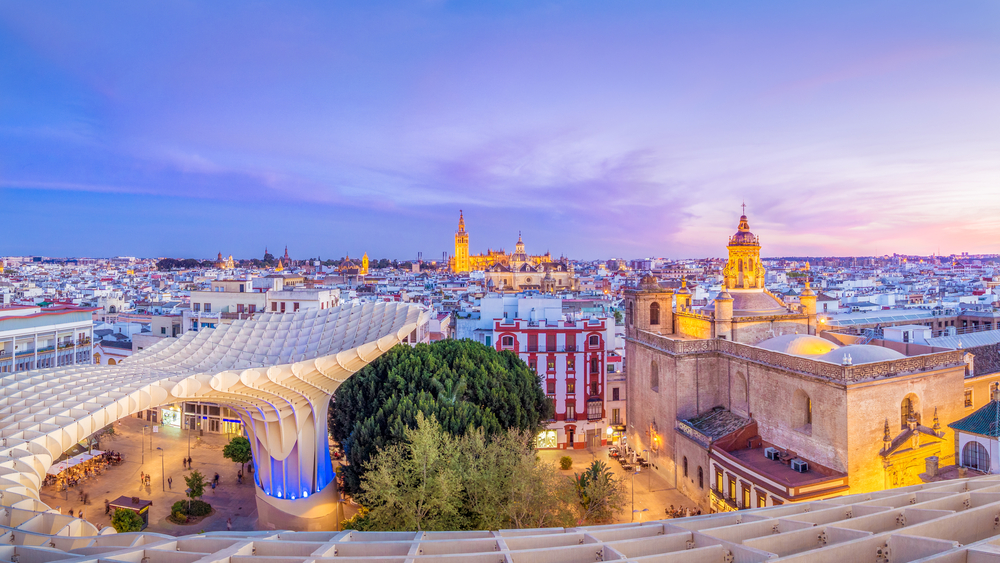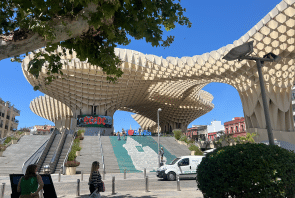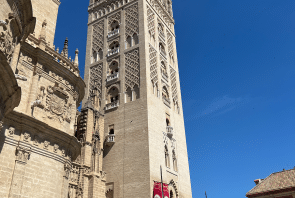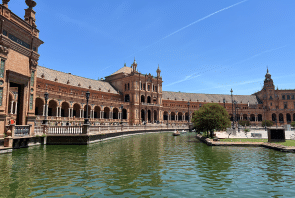With around 690,000 inhabitants, Seville is the fourth largest city in Spain and the capital of the Andalusia region. The picturesque old town of Seville is one of the most fascinating in all of Europe and year after year attracts a large number of tourists from all over the world who want to discover the “cradle of flamenco”. Due to its climate with mild winters and an average of only 50 rainy days per year, Seville is a destination that can also be visited during the cooler season. The city is located on the Guadalquivir River in a fertile plain in southwestern Spain.
The main attractions in Seville
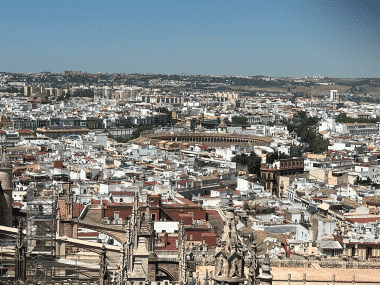
The beautiful old town around the former Jewish quarter of Santa Cruz captivates every visitor with its labyrinth of narrow streets and impressive squares. During a stroll through this picturesque part of Seville, you will notice numerous magnificent buildings whose architecture is reminiscent of the Moorish period of southern Spain. These include the Alcázar Palace, which has both Arab and Christian style elements.
Our tip: Get tickets online early to visit the palace.
Its extensive green area with the ponds, the sunken gardens and the elaborately decorated galleries is, as well as the imposing halls and halls inside, an absolute highlight during a city tour. It is believed to be the oldest palace in Europe that is still inhabited, as the Spanish king still resides here when he is in Seville. The unique complex has been part of the UNESCO World Heritage Site since 1987, together with the Maria de la Sede Cathedral. The Gothic cathedral was built from the remains of a Moorish mosque and was completed in 1519 after more than a hundred years of construction.
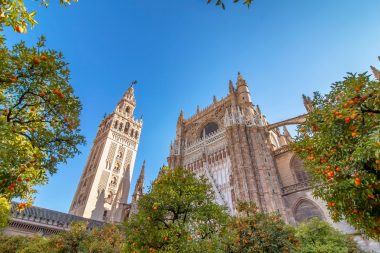
It is one of the largest churches in the world and is home to fantastic art treasures, an unusual organ and several tombs of important personalities, including that of Christopher Columbus. Right next door is the 97 m high Giralda, a tower with a play of 24 bells. This had been built in 1196 as the minaret of the most important mosque in Seville and was considered the tallest tower in the world at the time. The dodecagonal Torre del Oro, the gold tower, which is located on the banks of the river and housed, among other things, the prison and the gold and silver warehouse, as part of the former city fortifications, also dates from the same period.
The bullring of Seville, the Playa de Toros de la Maestranza, was built as early as the 18th century. It offers space for 18,000 spectators, making it the second largest in Spain after the Las Ventas Arena in Madrid .
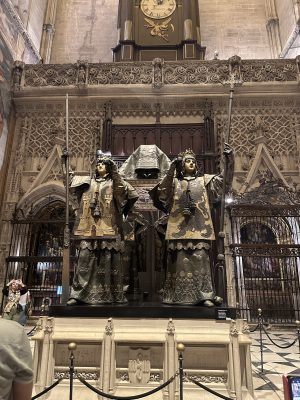
During a walk through the old town of Seville, every visitor sooner or later comes to the impressive square in front of the town hall, which is surrounded by numerous imposing magnificent buildings. The Plaza de San Francisco with its beautiful old buildings is an ideal place to rest and linger. Maria Luisa Park, an extensive green area along the Guadalquivir River, also attracts locals and tourists alike.
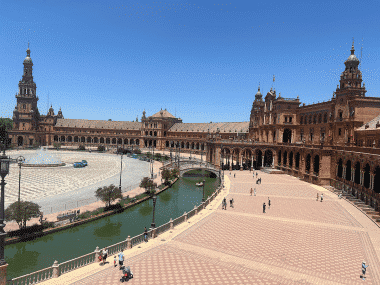
In the middle of this wonderful oasis is the Plaza de España. The site, as well as a large number of other buildings, was laid out on the occasion of the Ibero-American Exhibition in 1929. The square, in combination with the semicircular building on its edge, symbolizes the relationship between Spain and the Latin American colonies in the form of an embrace. The eye-catching ceramic tiles and mosaics on the walls represent the individual provinces of the country through maps and coats of arms.
During a city tour in Seville, you will discover traces of the exciting history at every turn, but of course many modern buildings also attract the attention of visitors. One of them is an eye-catching construction made of wood, concrete and steel that is located in the Plaza de Encarnación: the Metropol Parasol – Setas de Sevilla. The controversial ensemble is also popularly called “the mushrooms” by the Sevillanos. It rises at a height of 26 m and a length of 150 m above the ground and has been considered the city’s new landmark since its completion in 2011. The walking path and the panorama terrace have now become a popular meeting place for young and old. In the basement of the Metropol Parasol there is also an interesting archaeological site and a small archaeological museum, which are well worth a visit.
Culinary specialties
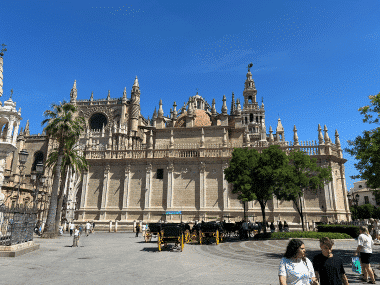
Ideal for the hunger in between, as everywhere in Spain, are the small tapas bars. In Seville, the various skewers of chicken or pork in a spicy marinade, called “pinchitos muronos”, are particularly popular. Spinach with chickpeas, garlic and fried bread is a speciality of the region, as are small omelets with cod fillet, the so-called “tortillas de bacalao”. On hot summer days, people like to refresh themselves here with an ice-cold tomato or cucumber soup.
Seville in Andalusia is one of the most interesting city destinations in Europe and is worth a visit at any time of the year.


